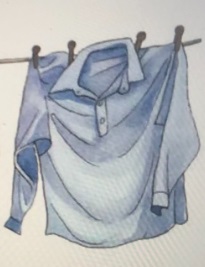Clothesline Telegraph
In early 1863, Dabney Walker and his wife Lucy Ann approached the Union lines near Falmouth, having escaped from a farm in Spotsylvania County where they were enslaved. It remains uncertain if Dabney Walker and Dabney, “The Black Scout of the Rappahannock” are the same individual. However, it is evident that the Walkers became invaluable to Major General Joseph Hooker, providing critical intelligence on the Army of Northern Virginia. At that time, there were whispers of a “clothesline telegraph” operating between Falmouth and Fredericksburg. Historian Edwin C. Fishel noted, “A spy was positioned in Fredericksburg, tasked with signaling to Falmouth using a ‘clothesline code.’” John C. Babcock of Hooker’s Bureau of Military Information relayed to Major General Daniel Butterfield that a clothesline displaying one item indicated troop movements near Fredericksburg, no items meant the area was clear, two items signified a maintained force, and three suggested reinforcements. This system was active until 4 P.M. the previous day. The operator of this ingenious communication method in Fredericksburg was purportedly Lucy Ann Walker.
Shortly thereafter, his wife, who had accompanied him, urgently requested permission to serve as a maid for a “Secesh woman,” whom General Hooker hesitated to send to her associates. Her request was approved. She crossed the Rappahannock and within days became the laundress at the headquarters of a notable Confederate General. Meanwhile, Dabney, stationed on the northern bank, was remarkably well-informed about Confederate strategies. Almost immediately after any movement was planned or discussed by the Confederate generals, Hooker was fully briefed. He was aware of which corps was moving, their direction, the duration of their march, and their strength—all this intelligence was relayed by Dabney, whose reports were consistently accurate.
Dabney was consistently present, never interacting with the scouts, and appeared perpetually busy with his responsibilities as a cook and groom at headquarters. The source of his intelligence was initially a mystery to the Union officers. Eventually, after persistent requests, he revealed his ingenious method to one of the officers. He guided him to a spot with a clear view of Fredericksburg, pointed to a small cabin on the outskirts by the river, and inquired if he noticed the clothesline with drying garments. “Well,” said he, “that clothes-line tells me in half an hour just what goes on at Lee’s headquarters. You see my wife over there; she washes for the officers, and cooks, and waits around, and as soon as she hears about any movement or anything going on, she comes down and moves the clothes on that line so I can understand it in a minute. That there gray shirt is Longstreet; and when she takes it off, it means he’s gone down about Richmond. That white shirt means Hill; and when she moves it up to the west end of the line, Hill’s corps has moved up the stream. That red one is Stonewall. He’s on the right now, and if he moves, she will move that red shirt.”
One morning Dabney came in and reported a movement over there. “But,” says he, “it don’t amount to anything. They’re just making believe.” An officer went out to look at the clothes-line telegraph with his field-glass. There had been quite a shifting over there among the army flannels. “But how do you know but there is something in it?”
“Do you see those two blankets pinned together at the bottom?” said Dabney. “Yes, but what of it?” said the officer. “Why, that’s her way of making a fish-trap; and when she pins the clothes together that way, it means that Lee is only trying to draw us into his fish-trap.” As long as the two armies lay watching each other on the opposite banks of the stream, Dabney, with his clothes-line telegraph, continued to be one of the promptest and most reliable of General Hooker’s scouts.
Lucy Ann Walker risked her life to deliver crucial intelligence to the Army of the Potomac. After the two armies departed from Fredericksburg and Falmouth in June 1863, she apparently reunited with her husband. Following the war, they resided in Washington, D.C.

